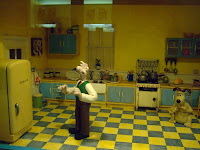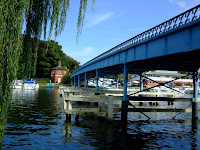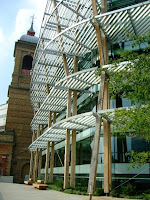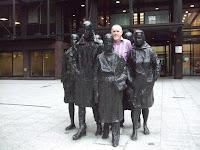
We began the day just down the road from our overnight accommodation, at the Bascilica di Santa Maria degli Angeli (St Mary of the Angels – after which Los Angeles was named: major contrast!)
The Bascilica is a huge edifice build over two smaller structures. One, a chapel on the site of the original chapel the Pope granted St Francis for his work and worship and the second, a chapel built over the spot where St Francis died in 1226. (Major contrasts in size and décor.)

Of course, one cannot overlook the contrast between the simplicity espoused by St Francis as he rebelled against the decadence of society and the church, and the commercialization of the area around the whole St Francis story, the pilgrims and the grandeur of the churches that have been built in his name. Another contrast is San Francisco, named after the saint and, again, far removed from the message he bore.

But, “when in Rome” and all that, we needed to experience the full deal and after seeing where he lived and worked and the spot where he died we joined the hordes and filed past his burial spot in the crypt under the Bascilica of St Francis in Assisi proper. A contrast here is the insistence on modest dress, no bare arms,

no shorts for men or women etc (as in many major churches in Italy) and yet one can often see drawings, statues or carvings of naked men and women in these same churches and Christ, himself, is usually only clad in a loin cloth.
We followed a tourist route through Assisi and also visited the Bascilica of St Clare founder of the order of the Poor Clares (think Santa Clara, California, for the contrast) and saw her tomb and various objects she owned or wore.

In contrast to St Francis' teachings, we were beguiled by a couple of very nice works by local artisans and so left Assisi considerably poorer than when we arrived; and in that respect we were similar to the great man himself.
We left Assisi and set the sat-nav to take us to Gubbio: the road was great until the sat-nav sent us off on a fairly minor road along a ridge, then directed us down something that was not much more than

a goat track before depositing us on a motorway that seemed to start/end in the middle of nowhere – quite a contrast.
Although Gubbio is reputedly the most beautiful medieval city in Umbria, it is not so much a hilltop town as a hillside town as it spills down the hill from the Bascilica past the two large Palazzo on opposite sides of a square, down past the loggia and onto the flat land where there are the remains of a Roman amphitheatre.

Leaving Gubbio we took another minor, but very scenic route over the hills to Cortona crossing from Umbria back into Tuscany as we went. After exploring this small hilltop town and finally locating the street that has some of the oldest surviving medieval buildings in Italy we found a bed for the night just outside the town of Montecchio.
The photos would have been much better had our 4-month old Canon Powershot G10 not failed

 The season for stately home openings is drawing to a close. We chose to visit Woburn Abbey on its last open weekend. This magnificent house is the home of the Dukes of Bedford. The tour takes in some of the ground floor, and the State Rooms which occupy all of the first floor. The State Rooms are really sumptuous, yet totally welcoming. This floor is followed by a tour of the family silver and china collections in the vaults which has all been laid out in most appealing arrangements.
The season for stately home openings is drawing to a close. We chose to visit Woburn Abbey on its last open weekend. This magnificent house is the home of the Dukes of Bedford. The tour takes in some of the ground floor, and the State Rooms which occupy all of the first floor. The State Rooms are really sumptuous, yet totally welcoming. This floor is followed by a tour of the family silver and china collections in the vaults which has all been laid out in most appealing arrangements. From here, we drove to a very different style of house. Woburn was originally an Abbey, and the abbot was hung in an oak tree on the property in Henry VIII's time for 'treason'. Our second destination was Moggerhanger Park. This house was enlarged in the 18th century for the Governor of the Bank of England, by Sir John Sloane.
From here, we drove to a very different style of house. Woburn was originally an Abbey, and the abbot was hung in an oak tree on the property in Henry VIII's time for 'treason'. Our second destination was Moggerhanger Park. This house was enlarged in the 18th century for the Governor of the Bank of England, by Sir John Sloane.  Then again enlarged by his son, also using Sir John Sloane as architect. The tour was an architectural tour, which talked about Sloanes's style of alterations. We found it very appealing, Sloane's style was almost like the art deco look two centuries later.
Then again enlarged by his son, also using Sir John Sloane as architect. The tour was an architectural tour, which talked about Sloanes's style of alterations. We found it very appealing, Sloane's style was almost like the art deco look two centuries later.






































